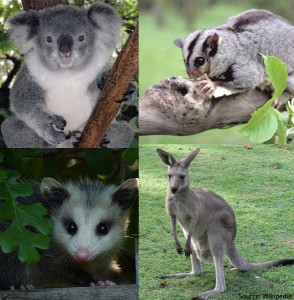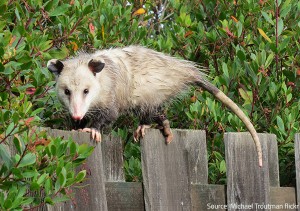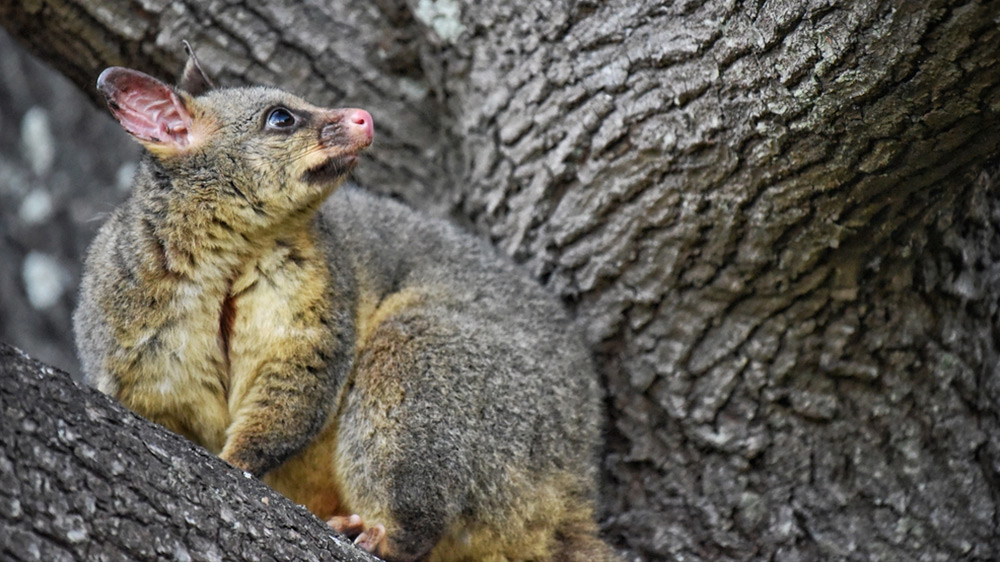How To Get Rid Of Opossums
Marsupials are truly unique animal species and people usually find them very adorable. The most popular representatives of the family – the kangaroo and the koala – have long been an object of amazement and admiration throughout the world. However, the only marsupial native
These nocturnal scavengers are omnivorous and often find shelter in human-made structures. They usually live under a shed, a porch, or in an attic, and they are known to forage in trash bins for food and to steal pet food left outside. The small marsupials are not very aggressive, nor are they particularly dangerous, but they can cause real havoc and spread contagious diseases
that have ventured onto your property as soon as possible is an urgent matter because they leave large droppings all over the place they inhabit and carry a very strong odor. If you decide to just leave the little intruders alone, they will not go away but will take up permanent residence in your attic and will raise young ones there, causing significant damage in the meantime.
Is Opossum Control Possible?
Without a doubt, keeping opossums away will save you from a lot of trouble. There are several simple precautionary measures you can take to block their access to your home but mind the fact that opossums are resourceful animals, especially when it comes to food and safety. They are well-known for “playing possum” – feigning death when encountered with serious danger
Keep your yard perfectly clean – possums don’t find clean and tidy areas attractive, so you have a chance to discourage them from entering in the first place;
Take pet food inside – needless to say, tasty treats provoke much interest in various critters and opossums make no exception;

Possums in your rental: Responsibility and treatment
If you’ve ever had a possum living above your ceiling, you’d know about it. They’re known to be noisy while they walk along your roof cavity. Here are a few tips to help you keep the critters at bay.
What’s the deal with possums?
Possums may decide to nest in your roof void and will leave droppings and urine around the nest. They’re also territorial so the smell of that urine can be particularly potent and could permeate ceilings. Much like rats and mice, possums will gnaw on just about anything that comes their way – and that includes easily accessible electrical wire and circuits.
You might have a problem with possums if…
You hear them scratching or scurrying around in your ceiling. Possums are nocturnal creatures, so if they’re around, they’re most likely to make noise at night. It’s important to note that the presence of rats can also be identified by scratching and scurrying, which can make it had to distinguish between the two. Another thing to look out for is possum droppings which will typically be larger than those that come from a rat.
Why are there possums in and around my house?
These adaptable (and usually unwanted) house guests are highly attracted to human houses. Possums like to make their nests in ceilings and wall cavities. Urban possums seem to like human-built structures like houses – even choosing them over a hollow tree. One single roof can be an excellent space for cohabiting possums, but when raucous disputes occur you’ll hear it. People often describe a ‘thump, thump, thump’ noise while possums make their way across the roof cavity, combined with screeching, crashing and scraping sounds throughout the night. Some people don’t mind having possums around, but for most, they’re considered a pest because of the noise and damage they can cause.
Steps to take against possums
Once you’ve had a possum removed from your property, there may be a need to take some preventive measures to ensure it does not return. This could involve sealing all possible possum entry points in and around your building. Remember, trees that overhang your rental property can also be an issue because they provide easy access for opportunistic possums looking for shelter in your roof.

Possums
What does it look like?
Possums are furry animals of medium to stout build with thick, bushy tails. Their bodies are 38-45cm long (65-95cm long including the tail) and their weight varies greatly but averages 2-3kg. There are two main colour forms, grey and black. Possums have large eyes and catlike whiskers, which are characteristic of nocturnal animals.
Possums can live anywhere that has shelter and a varied food supply. Forests are their favoured habitat but forest/pasture margins can also support very dense populations of possums. Possums feed mainly on leaves but also take buds and flowers, fruits, ferns, bark, fungi, invertebrates (including land snails and weta), native birds and their eggs, and carrion. They are nocturnal, but in winter starving or sick animals may emerge to feed in the afternoon.
Why is it a problem?
Possums are able to occupy a range of habitats and can survive on poor or irregular food supplies. By eating plant foliage they damage and destroy forests, and affect pasture, vegetable and horticultural crops. Possums can be a vector in the spread of diseases that affect domestic animals and humans, such as tuberculosis.
Possum populations expand their range by the gradual spread of female offspring on the edge of occupied home ranges. Their ability to produce more than one offspring per year and the enhanced survival of juvenile females when conditions are good, allows possum populations to increase rapidly in newly invaded areas or after populations have been reduced by control pressure.
The average life span of a possum is 7 to10 years. Most female possums breed from one year of age and can produce one or, less commonly, two young in a season if food supplies are adequate. Young possums spend the first part of their life in their mother’s pouch, feeding on rich milk. After weaning at 5-8 months, young females tend to remain close to their mother’s home range. Young males disperse randomly in search of receptive females and have been recorded migrating between 0.5 to 20 kilometres.

About Possums
Natural tree hollows have been lost due to fires, land clearing for housing and harvesting for wood fire burning. As brushtail possums are adaptable, they often nest in the roves and walls of the houses. In the past, many people have trapped and relocated possums, but research using radio tracking collars has proven they die. Pest exterminators often kill or translocate the possums, which does not solve the problem, but causes other problems like trap shyness.
There are usually between 1 and 7 possums per house block. Males have larger territory than females, of up to 5 house blocks if the food supply is good, or up to 10 kms if the food is poor. Two in ten male possums survive, with females having a better chance, and they can live up to 13 years.
Possums are territorial to a point where they will fret when released into an alien territory. They will have to fight residents of the new area, a fight they seldom win. 70% of translocated possums are dead within one week. Trapping and translocating of possums rarely solves a problem, as another possum usually moves it to occupy the territory or den site in our roof, within the short period of time. Released possums may displace other wildlife such as owls, or gliders from hollows. Ideally a trapped possum in your roof should be released into a nestbox in your garden. Ie in its own territory.
Possums, like cats, are territorial. By installing a nestbox for it, other possums may be discouraged from entering your roof. Possums can be attracted to nestbox by placing fruit or in it, and smearing possum droppings over the box to take away the “new” smell. Possums will urinate on, and rub oil from their chest, chin and anal scent glands onto it to make it their territory, and use vocalisations to defend it.
Look for the tell tale oil stains and hair traces in the entrance of the box to see if it is being used. Seal any entrance holes into our roof while the possum is out foraging for food approx. 11pm. Possums wake approx. 9 pm, go out to look for food and return to their den approx. 4 am. These are the times most people hear them on their roves or ceilings.

How to Get Rid of Possums
Possums are non-aggressive animals however they are known to create unsanitary conditions, and if these circumstances help in the development of diseases, it can turn aggressive as well. There are various ways to get rid of these creatures. By removing them, we can make the environment more appealing.
You can get rid of them by setting traps and capture them immediately. You can remove them by scaring them away. You can let pets like dogs and cats roam around in the lawn. This will scare away the possums. They bite the possums viciously and scare them away in no time. You can also collect the hair of your pet and scatter them where there is a possibility of these possums.
You also have the option of setting up motion-activated lights or sprinklers to startle and scare them off. You can do this along with the perimeter of the house. If the possums dare to cross the sensor, the motion activated devices which are set will be automatically triggered and give off an alarm signal.
This may help frighten the possums away from that place on the spot. These devices are more efficient than those that only activate lights. The lights are enough to scare these possums away, but the water sprinklers also work best to frighten them. Water sprinklers are much more effective than light activated devices, but they are a bit complicated to handle.
Many ingredients together have an unyielding scent. The ingredients such as Ammonia, mothballs and the garlic are the items that can make these ugly little creatures flee from your residence. You simply need to mix an adequate amount of ammonia in coffee. The coffee should be placed inside a bottle with a lid. After doing this, put a rag in the ammonia and then cut the side of the cap by bringing one end of ammonia.